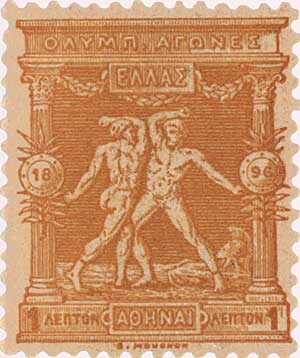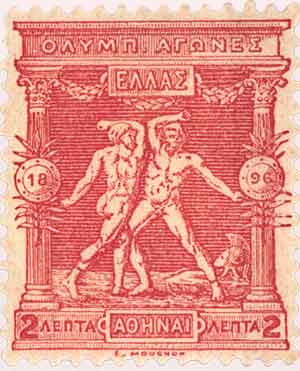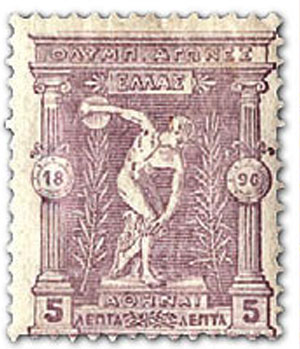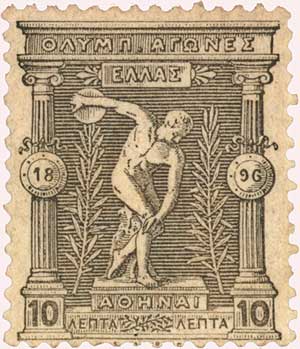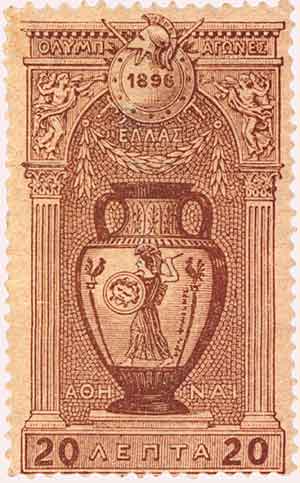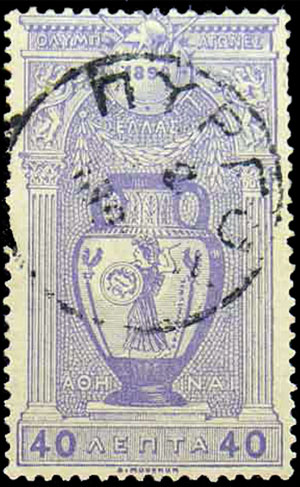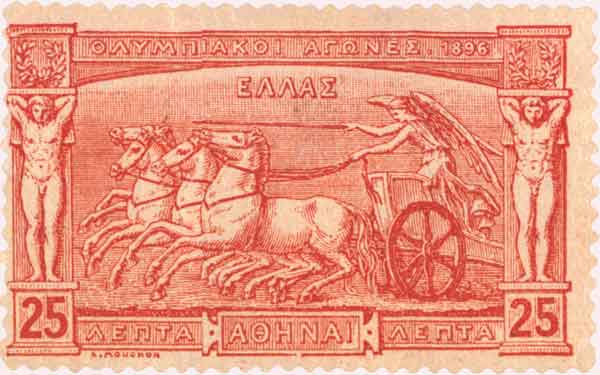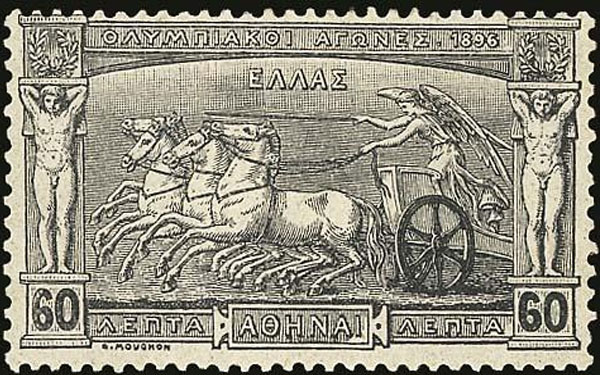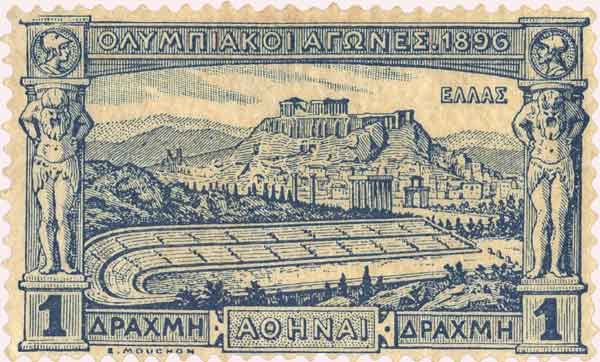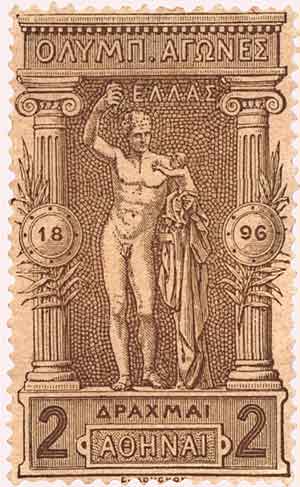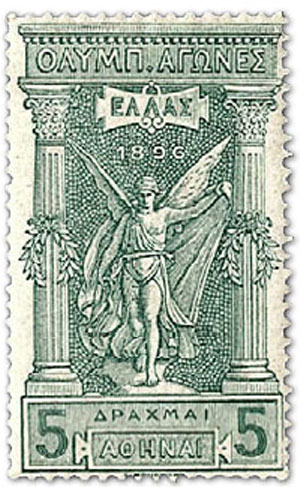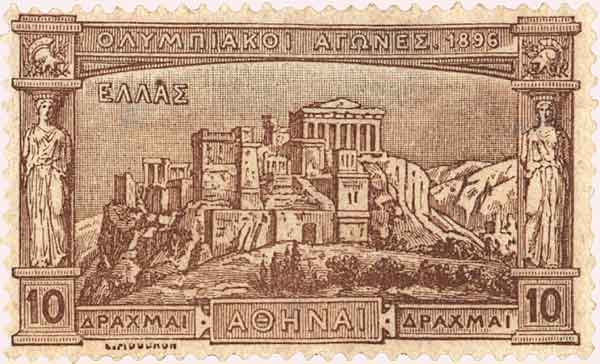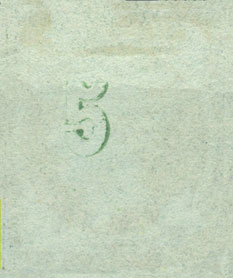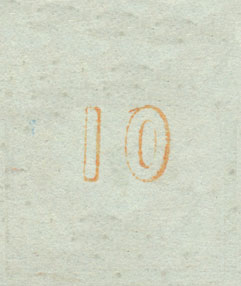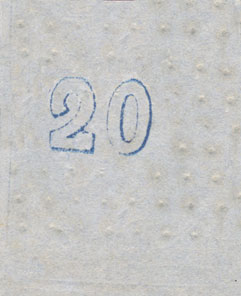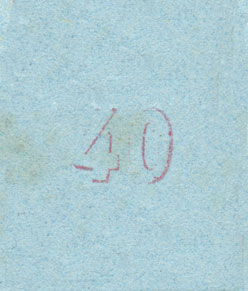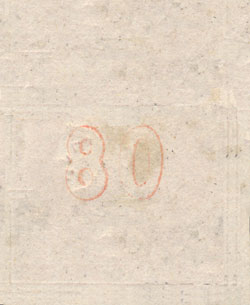Hermes Head Stamps


Large Hermes heads is the name used by philatelists to describe the first issue of Greek stamps, issued in 1861 and used until 1886.
The stamps depict a profile of the Greek messenger god Hermes (Mercury) in a frame strongly resembling that used for contemporary stamps of France. The first set was issued on October 1, 1861.
It consisted of seven denominations (1, 2, 5, 10, 20, 40 and 80 lepta). The 30 and 60 lepta stamps were introduced in 1876.
The basic design was by the french engraver Albert Désiré Barre (1818-1878) and the first batch was printed in Paris by Ernst Meyer.
Most types were also printed with control numbers on the back. Further printings took place in Athens and the stamps remained in use until the introduction of the
Small Hermes heads in 1886-1888.
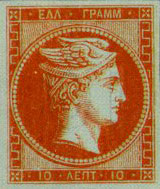 |
| 1858 10 Lepta orange Paris print. |
|
|
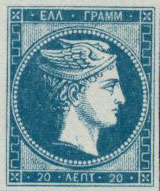 |
| 1858 20 Lepta blue, Paris print. |
|
|
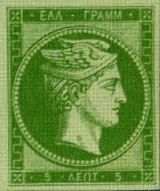 |
| 1858 5 Lepta green Paris print. |
|
|
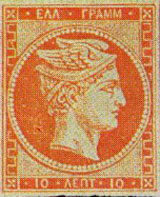 |
| 1861 10 Lepta orange on blue. |
|
|
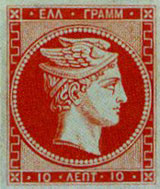 |
| 1861 10 Lepta deep orange Paris printing. |
|
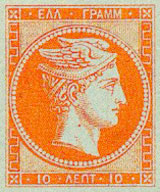 |
| 1861 10 Lepta orange 'BARRE' issue. |
|
|
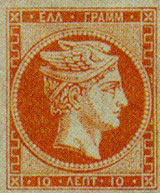 |
| 1861 10 Lepta orange 1st Athens print. |
|
|
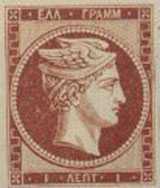 |
| 1861 1 Lepto first Athens print. |
|
|
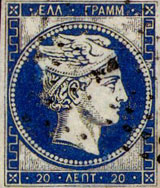 |
| 1861 20 Lepta deep blue, Athens coarse printing. |
|
|
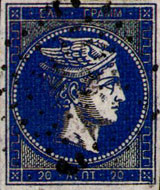 |
| 1861 20 Lepta deep Prussian blue, Athens coarse.... |
|
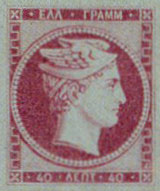 |
| 1861 40 Lepta lilac on bluish Paris print. |
|
|
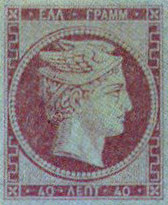 |
| 1861 40 Lepta lilac on bluish, 1st Athens print. |
|
|
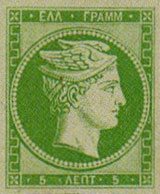 |
| 1861 5 Lepta green Paris print. |
|
|
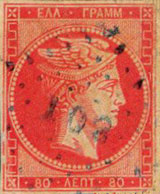 |
| 1861 80 Lepta 1st printing, used at Bucharest. |
|
|
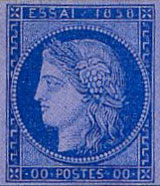 |
| 1861 Essai 1858, by Barre. |
|
 |
| 1861 Paris 1 Lepto. |
|
|
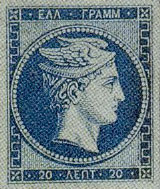 |
| 1861 Paris 20 Lepta. |
|
|
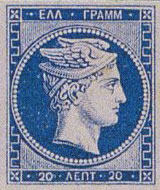 |
| 1861 Paris print 20 Lepta blue strip. |
|
|
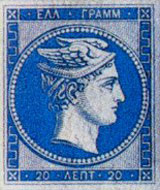 |
| 1861 Paris print, 20 Lepta blue. |
|
|
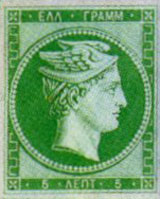 |
| 1861 Paris print, 5 Lepta green. |
|
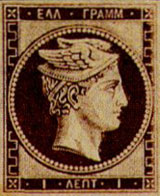 |
| 1861/2 1 Lepta chocolate fine Athens print. |
|
|
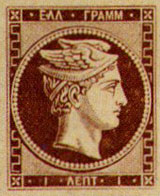 |
| 1861/2 Fine Athens print 1 Lepto chestnut. |
|
|
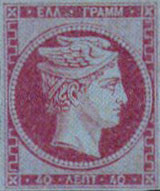 |
| 1861/2 Fine Athens print 40 Lepta pale lilac on blue. |
|
|
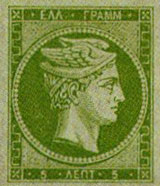 |
| 1861/2 Fine Athens print 5 Lepta green. |
|
|
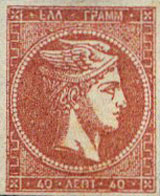 |
| 1862 40 Lepta rose-mauve on lilac. |
|
|
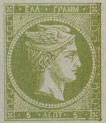 |
| 1862 Second Athens print 5 Lepta green |
|
|
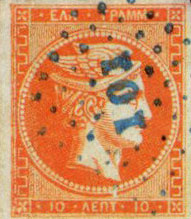 |
| 1862-7 10 Lepta orange on bluish, used at Ibraila. |
|
|
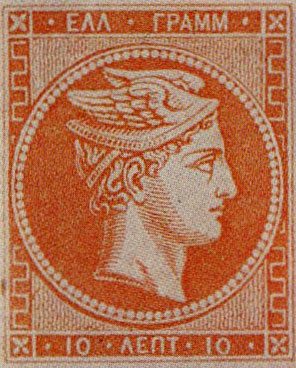 |
| 1862-7 10 Lepta salmon on greenish paper. |
|
|
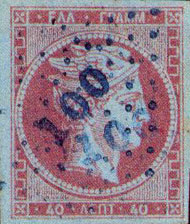 |
| 1862-7 40 Lepta 2nd printing, used at Galatz. |
|
|
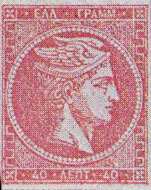 |
| 1862-7 40 Lepta rose-mauve on lilac. |
|
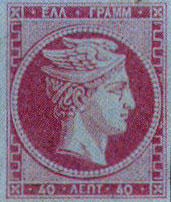 |
| 1862/8 Athens print 40 Lepta red violet on blue. |
|
|
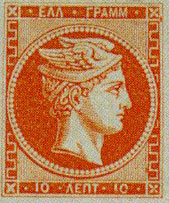 |
| 1868 10 Lepta orange from cleaned plates. |
|
|
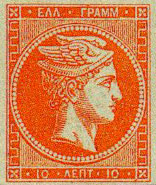 |
| 1868 10 Lepta orange, from cleaned plates. |
|
|
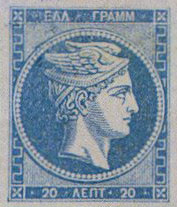 |
| 1868 20 Lepta pale blue on bluish from cleaned plates. |
|
|
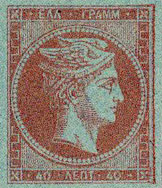 |
| 1868 40 Lepta dull rosy mauve. |
|
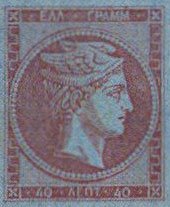 |
| 1868 40 Lepta lilac on blue from cleaned plates. |
|
|
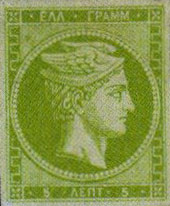 |
| 1868 5 Lepta green on bluish from cleaned plates. |
|
|
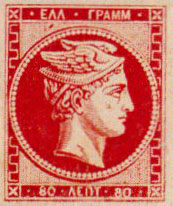 |
| 1868 80 Lepta carmine from cleaned plates. |
|
|
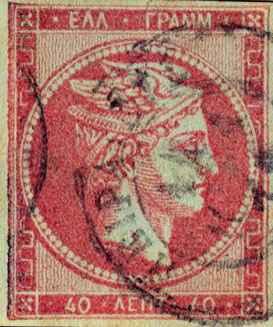 |
| 1870 40 Lepta 'SOLFERINO'. |
|
|
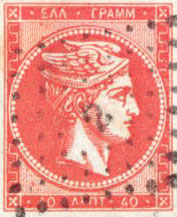 |
| 1870 40 Lepta lilac rose "SOLFERINO". |
|
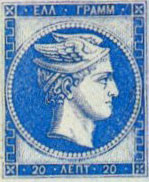 |
| 1870 Special 'Hard' printing, 20 Lepta pale blue. |
|
|
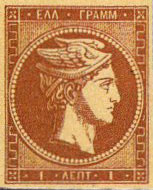 |
| 1870 Special printing 1 Lepto brown. |
|
|
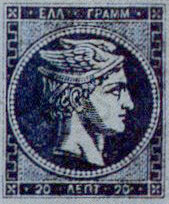 |
| 1872 20 Lepta indigo blue. |
|
|
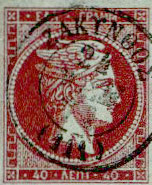 |
| 1872 40 Lepta deep bright purple. |
|
|
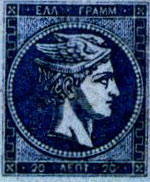 |
| 1872 Meshed paper, 20 Lepta deep blue. |
|
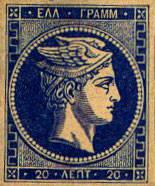 |
| 1875 20 Lepta prussian blue. |
|
|
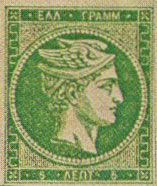 |
| 1875-80 5 Lepta yellow green. |
|
|
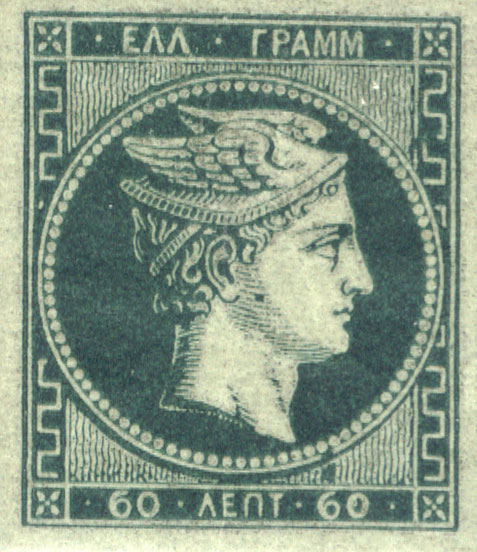 |
| 1876 Paris print 60 Lepta |
|
|
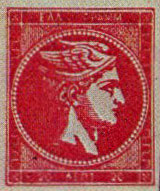 |
| 1880 20 Lepta carmine-lake. |
|
|
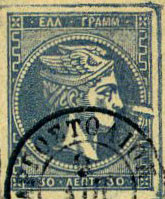 |
| 1880 30 Lepta blue, flaw. |
|
|
CONTROL FIGURES (Reference on the typical CF of the issue) |
Small Hermes heads is the name used by philatelists to describe the second issue of greek stamps, issued in 1886-1888 and used until 1901.
The first three denominations (25 lepta, 50 lepta and 1 drachma) were issued on April 1. The remaining denominations (1 lepton, 2, 5, 10, 20 and 40 lepta) were issued on February 1, 1888,
replacing the large Hermes head stamps. Like their predecessors, they depicted Hermes in profile, but with a smaller head and a rounder helmet.
The design was by Henri Hendrickx (1817-1894) and it was engraved by Albert Doms, Atelier de Timbre, Belgium.
The first batch was printed in Malines, Belgium followed by numerous reprints in Athens, until 1900. The 50 lepta stamp was not reprinted.
The stamps were produced using the gravure method, using printing plates of 300 stamps in 6 groups of 50 stamps. Initially the sheets were imperforate. Perforated versions,
initially 13½ and later 11½, became available in 1891.
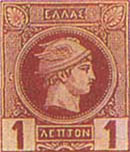
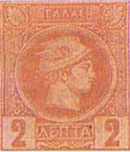
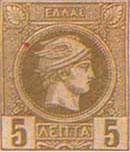
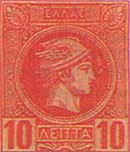
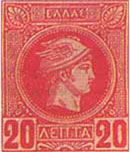
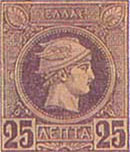
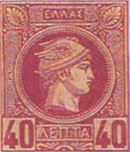
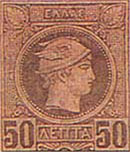
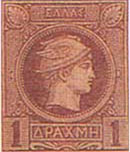
The first Olympic Stamps
The Greek Olympic stamps are the first ones worldwide.
Upon opening of the first modern Olympic Games in Athens on the 25th of March 1896, a series of commemorative stamps depicting the Olympic contests were issued.
The 12 designs were designed by the Swiss Professor A.Guilleron and selected by the Greek Professor G Svoronos. The french engraver E.Mouchon created the steel matrixes.
| Value |
Color / Discription |
Edition |
| 1 Lepto |
yellow
Wrestlers |
4.000.000 |
| 2 Lepta |
red
Wrestlers |
3.000.000 |
| 5 Lepta |
mauve
Discus thrower |
3.000.000 |
| 10 Lepta |
grey
Discus thrower |
2.000.000 |
| 20 Lepta |
brown
Vase depicting Pallas Athene |
4.000.000 |
| 25 Lepta |
red
Quadriga of Chariot driving |
2.033.670 |
| 40 Lepta |
violet
Vase depicting Pallas Athene |
153.360 |
| 60 Lepta |
black
Quadriga of Chariot driving |
23.760 |
| 1 Drachma |
blue
Acropolis and Stadium |
221.250 |
| 2 Drachmas |
olive
Hermes |
157.800 |
| 5 Drachmas |
green
Victory |
107.106 |
| 10 Drachmas |
brown
Acropolis with Parthenon |
52.200 |
